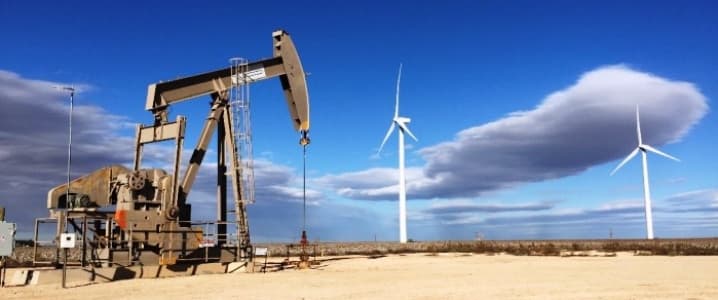Shale companies are increasing their hedging in order to provide some clarity for 2017 and guard against another possible downturn in prices.
U.S. shale companies have hedged about 27 percent of their production this year, compared to only 17 percent at the same point in 2016, according to Wood Mackenzie. The hedges lock them into relatively favorable price levels, securing some of the gains that accrued to oil since OPEC announced its deal in November.
The investment bank surveyed 33 small and medium-sized shale companies and found that the firms had hedged a combined 648,000 bpd of production this year, which is nearly quadruple the volume hedged at this point in 2015. And given the latest downturn in prices – WTI and Brent are off roughly 10 percent from early March levels – the companies appeared to have made a prudent decision. Wood Mackenzie estimates that the strike price for the hedges range between $50 and $60 per barrel for Brent, and have an average of about $54 per barrel. Last year, the contracts had an average strike price of just $42 per barrel.
The hedges do not necessarily matter much if oil prices stay in the $50s per barrel. But if crude continues to decline – if, for example, OPEC declines to extend its production cuts for another six months – then the companies that were smart enough to lock in hedges will be in a much better position than those that didn’t. Related: Saudi Arabia Will Not Break The OPEC Deal
The increase in hedges will also allow companies to stick to their spending plans rather than being forced to scale back on drilling. The result could be a higher level of U.S. oil production than would otherwise be the case without hedging. "Those hoping that recent oil-price weakness will prompt U.S. producers to pull back drilling activity and ease the glut of oil supply may need to keep waiting," Wood Mackenzie said in its report. "Those producers – most of which are highly exposed to U.S. (shale) – will use hedging gains to help plug any budget deficits caused by sub-$50 spot prices,” Wood Mackenzie’s Andy McConn said.
If oil prices stay the same or even decline a bit, it may not derail shale drillers as much as some might think. “We’re in a boom again in Texas, despite what’s happening with prices lately,” Michael Webber, deputy director of the University of Texas’ Energy Institute, told Bloomberg in a mid-March interview. “The cowboy spirit is back. Hedging is playing a big role.” Pioneer Natural Resources, a Texas shale driller, is a good example. According to Bloomberg, Pioneer has about 85 percent of its 2017 production hedged, so the company is moving forward with drilling regardless of price movements.
Hedging alone could put downward pressure on prices. If higher shale production is essentially baked into the near future, even in the face of lower prices, then production will rise and inevitably push prices lower. The shale drillers that hedged in recent months timed their contracts well – many would have locked in prices that might have only temporarily traded in the mid- to high-$50s.
The rig count has already soared nearly 25 percent so far this year, and is up more than 100 percent from its low point in May 2016. Last week alone saw the addition of 21 oil rigs even as prices fell rather sharply in March. The rig count could continue to climb as shale companies feel undeterred by faltering prices. The weekly rig count, of course, is a closely watched metric each week and new additions will put downward pressure on prices.
Related: 4 Factors Driving Oil Prices This Summer
These days, hedging seems like a relatively low-risk proposition. Locking in prices not only ensure steady revenues, but also provides certainty, allowing companies to move ahead without having to worry about daily fluctuations in prices.
The only danger is that companies will miss out on higher prices if crude moves above $60 per barrel. But few analysts are predicting that will occur at any point in the near future. Wood Mackenzie says that even if OPEC extends its production cuts for another six months, oil prices will likely remain in the $50s per barrel.
By Nick Cunningham of Oilprice.com
More Top Reads From Oilprice.com:
- Energy Market Deregulation: Be Careful What You Wish For
- Saudi Aramco IPO Under Pressure, As 9/11 Lawsuits And Oil Prices Hit
- There Is No Such Thing As Peak Oil Demand

















